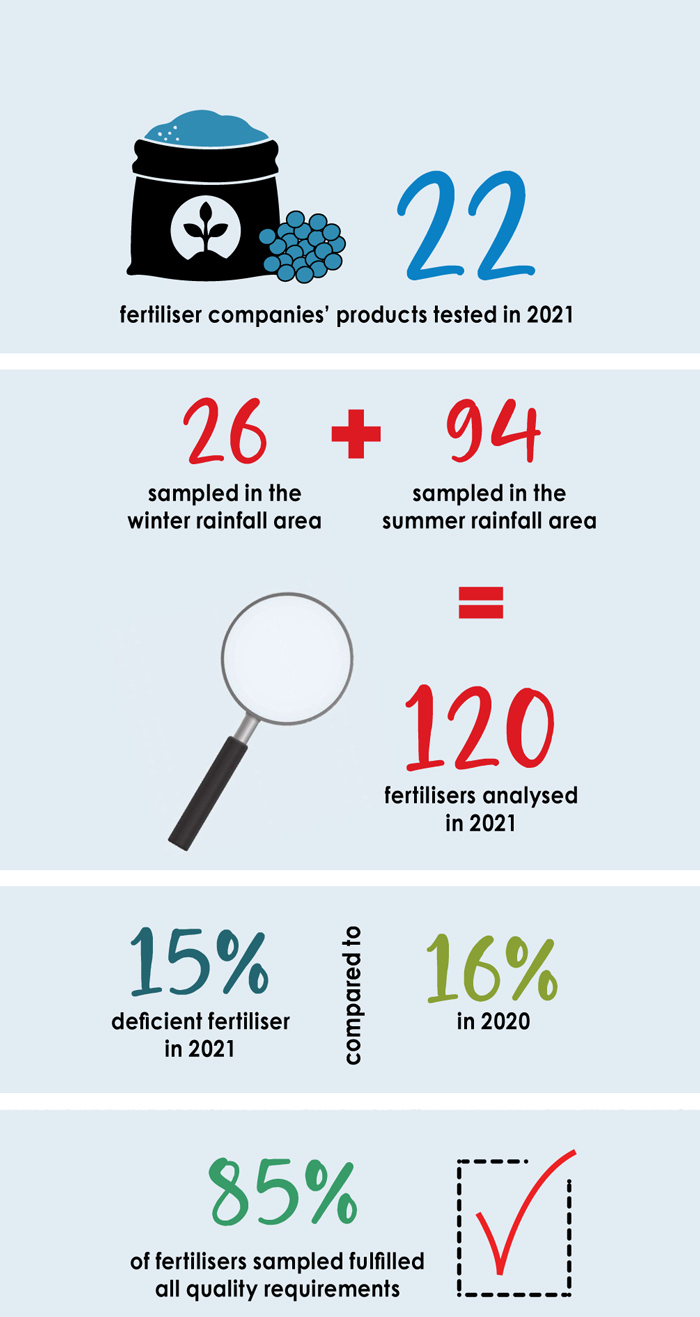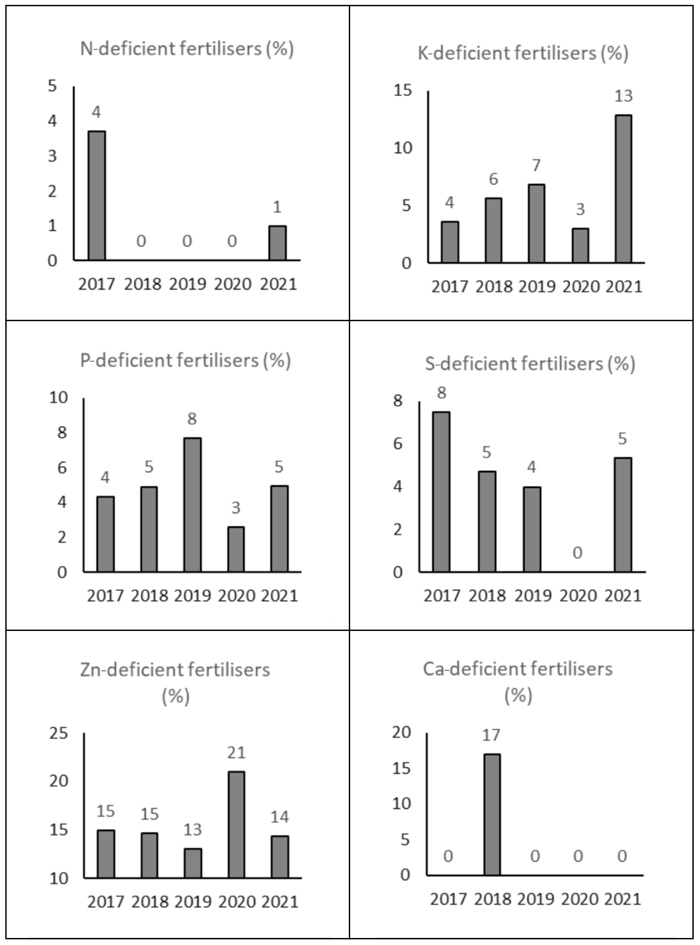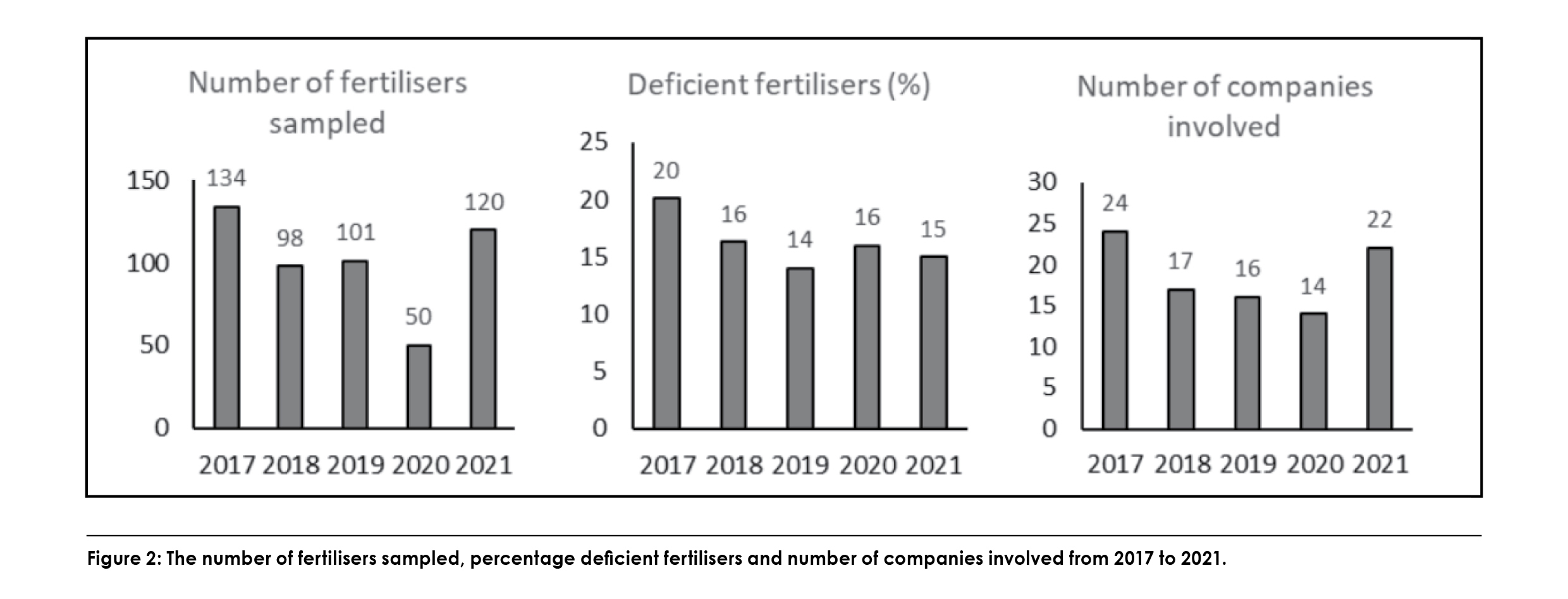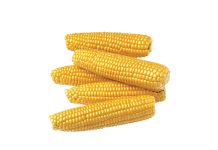
In 2017 a memorandum of understanding for the funding and management of this fertiliser and lime quality monitoring project was entered into by and between the then Department of Agriculture, Forestry and Fisheries, the Fertiliser Association of Southern Africa (Fertasa), Grain SA and the Sasol Agriculture Trust.
This project continued in 2021, with the aim to establish whether liming material and fertiliser quality are maintained according to the regulations of the Fertiliser Act (Act No. 36 of 1947) through random sampling of at least 140 fertilisers and ten lime sources.
Officials from the Department of Agriculture, Land Reform and Rural Development (DALRRD) sampled 26 fertilisers in the winter rainfall area and 94 in the summer rainfall area, while 22 fertiliser companies were involved. No lime was sampled in 2021 due to a directive from DALRRD as well as COVID-19 restrictions imposed by government. Fertiliser samples were initially analysed by Omnia and the results evaluated according to the regulations stipulated in the Fertiliser Act. Of the fertiliser samples 22 were non-compliant and were re-analysed for a second and some for a third time by independent laboratories to reach a conclusion.
 Of the 120 fertilisers, 8% were deficient in one aspect, 3% in two and 2% each in three and four quality parameters. Of the 115 fertilisers containing nitrogen (N), 99% were compliant in respect of N and 81 fertilisers contained phosphorus (P), of which 95% were compliant for P. Of the 78 fertilisers containing potassium (K), 87% were compliant regarding K. Also, 56 fertilisers contained sulphur (S) with 95% compliancy and eight contained calcium with 100% compliancy. The act stipulates that the total nutrient content (N + P + K) of a fertiliser should not deviate by more than 14 g/kg from the registered content. This combination was found in 107 fertilisers with 95% compliancy. There was a total of 49 fertilisers containing zinc (Zn), of which 86% were compliant for Zn. Seven fertilisers contained one or more of the following nutrients: copper (Cu), manganese (Mn), iron (Fe) and magnesium (Mg), all in compliant quantities. Seven fertilisers contained boron (B) of which two were deficient.
Of the 120 fertilisers, 8% were deficient in one aspect, 3% in two and 2% each in three and four quality parameters. Of the 115 fertilisers containing nitrogen (N), 99% were compliant in respect of N and 81 fertilisers contained phosphorus (P), of which 95% were compliant for P. Of the 78 fertilisers containing potassium (K), 87% were compliant regarding K. Also, 56 fertilisers contained sulphur (S) with 95% compliancy and eight contained calcium with 100% compliancy. The act stipulates that the total nutrient content (N + P + K) of a fertiliser should not deviate by more than 14 g/kg from the registered content. This combination was found in 107 fertilisers with 95% compliancy. There was a total of 49 fertilisers containing zinc (Zn), of which 86% were compliant for Zn. Seven fertilisers contained one or more of the following nutrients: copper (Cu), manganese (Mn), iron (Fe) and magnesium (Mg), all in compliant quantities. Seven fertilisers contained boron (B) of which two were deficient.
Results for fertilisers
Summarised statistics on the number of fertilisers sampled, analysed, re-analysed, fertilisers with one or more deficiencies and the number of companies involved in 2021 are shown in Table 1. As indicated, 22% of fertilisers were sampled in the winter rainfall area and 78% in the summer rainfall area. Of the 120 fertilisers, 97 were analysed once and 23 twice of which twelve were analysed a third time.
 Two fertilisers (8%) from the winter rainfall area had deficiencies, each in one nutrient. In the summer rainfall area, 16 fertilisers (17%) were deficient. Ten of these fertilisers were deficient in one nutrient or total nutrient content and four in two nutrients/total nutrient content. A further two fertilisers were deficient in three nutrients/total nutrient content and two fertilisers in four nutrients/total nutrient content.
Two fertilisers (8%) from the winter rainfall area had deficiencies, each in one nutrient. In the summer rainfall area, 16 fertilisers (17%) were deficient. Ten of these fertilisers were deficient in one nutrient or total nutrient content and four in two nutrients/total nutrient content. A further two fertilisers were deficient in three nutrients/total nutrient content and two fertilisers in four nutrients/total nutrient content.
Interesting trends from 2017 to 2020
Some relevant statistics for the various fertilisers sampled from 2017 to 2021 are graphically displayed in Figure 1. These figures are mainly self-explanatory. Figures for Cu, Fe and molybdenum (Mo) are not shown as only a few fertilisers contained these nutrients which were, since 2017, never deficient.

It should be kept in mind that the number of fertilisers sampled and the number of companies involved varied over time. The number of fertilisers sampled from each company varied over time as well. Thus, assuming that the five investigations, each on its own, are a true reflection of the fertiliser quality of each year, the following can be stated:
- The percentage of non-compliant fertilisers declined from 2017 to 2018 and then levelled out between 14% and 16%.
- N-deficient fertilisers declined from a low 4% in 2017 to ≤ 1% over time.
- The percentage P-deficient fertilisers of between 3% and 5% showed no trend over time, with the exception of the 8% found in 2019.
- Except for 2020, when an exceptionally small number of fertilisers was sampled, K-deficient fertilisers increased at a rate of 2,25 percentage points per year.
- S-deficient fertilisers declined from 8% in 2017 to 4% or 5% over time.
- Ca deficiencies as well as total nutrient deficiencies only appeared in one or two seasons with no trend over time.
Conclusion
The number of fertilisers sampled and companies involved declined from 2017 to 2020, but increased again in 2021 (Figure 2). The percentage of fertilisers with deficiencies showed no trend and varied between 14% and 20%. Deficiencies of P, Zn, Ca and Mg were variable over time with no clear trend. Deficiencies in N and S had a declining trend. However, deficiencies in K, with the exception of 2020, showed an increasing trend.

In conclusion, 85% of the fertilisers sampled in 2021 fulfilled all quality requirements and in many cases with nutrient levels noticeably above their registered contents. Thus, 15% of fertilisers were deficient in one or more aspects. K and Zn are notable, as respectively 13% and 14% of fertilisers containing them were deficient. This in contrast to the other major nutrients, which were deficient in 5% or less of fertilisers containing them.
From 2018 to 2021, the fraction of deficient fertilisers varied between 14% and 16%, with no particular trend. The mean absolute deviation of the nutrient content of most nutrients had a declining trend from 2017 to 2021. This is an indication that the precision of fertiliser manufacturing and blending has improved over time.



















